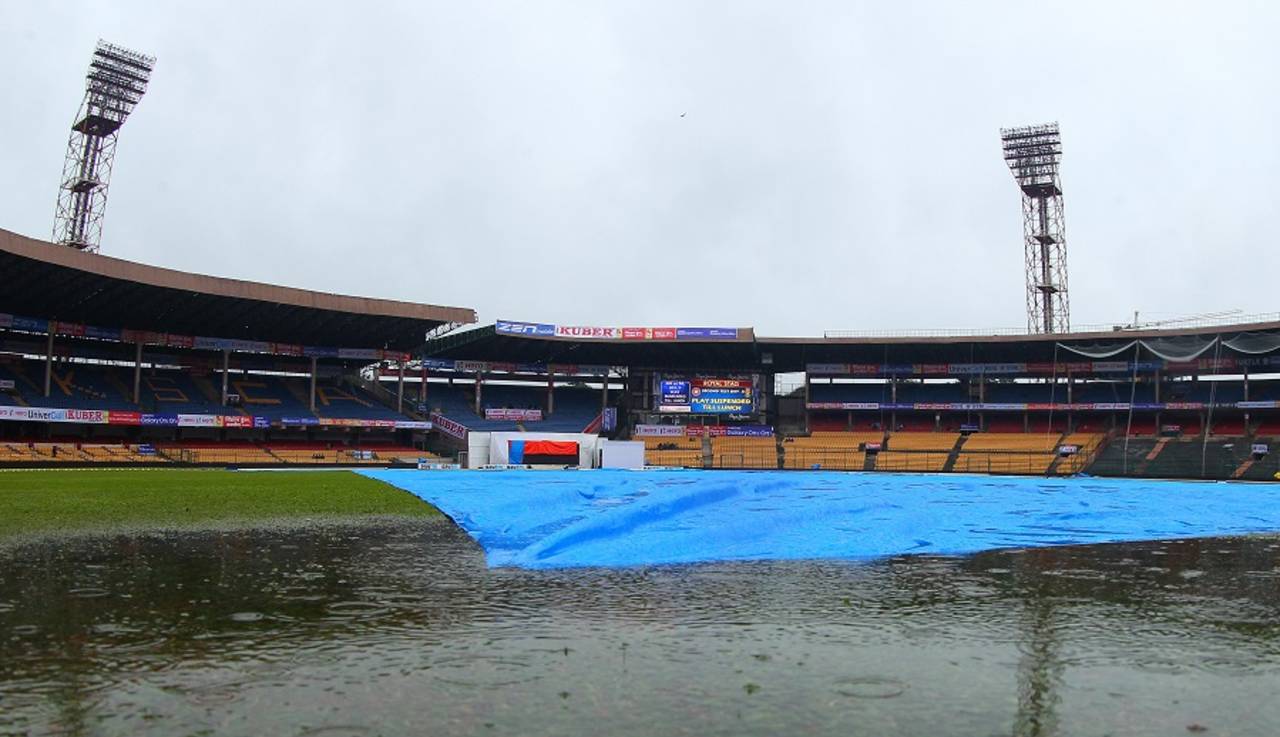It was not exactly sunny in Bangalore, but more light penetrated the grey skies than at any point during the two previous days. There was no rain. The promise of cricket, any cricket, was enough to draw to the Chinnaswamy Stadium a decent crowd - nowhere as big as on day one, but bigger, certainly, than anything seen at Mohali during the first Test.
The covers were off, the stumps were up, and the outfield, from a distance, looked good to play on. At 10 AM, the umpires had had a look at the ground. They decided to inspect it again at 11.30. That inspection brought another in its wake, at 1 PM.
At the time of the 11.30 inspection, a couple of the TV commentators were out in the middle, too.
"The bowlers' run-up is not an issue, between the wickets is not an issue. Nowhere does the water come out when I press my boot down into the field," former India batsman Sanjay Manjrekar said. "So it's really up to the umpires. If they say, 'Okay let's play,' we can. The concern, though, is parts of the outfield which are admittedly damp, but not wet."
According to K Sriram, the KSCA curator, the damp spots - near one of the square boundaries - had been caused by sweating under the covers. The umpires felt those patches might not be safe for fielders to run or slide on. The rest of the ground, Sriram said, was fit for play as early as 11 AM.
"We put sawdust for the bowling run-ups," Sriram said. "It was not soggy in that place. That was in perfect condition, not a problem at all. Only one particular area, because of the covers, there was sweating. The umpires felt moisture level on that particular area was on the higher side."
On the third afternoon, when the rain was at its heaviest, large puddles had formed in a few uncovered areas near the edges of the ground. Sriram said the groundstaff had managed to clear those areas as well.
"That was not an issue," he said. "Almost 70% was covered. Whatever we had exposed was not a problem at all. Where we had covered, around the practice wicket area, a little moisture was there.
"You know for the last 10 days we have been having rain. We have not removed the covers for the last three days, so naturally there will be too much of sweating."
Apart from the ubiquitous Super Soppers, Sriram revealed that the groundstaff were also armed with a machine called the Pro Core. This, he said, makes incisions around two or three inches deep, allowing air to permeate and speed up the evaporation of moisture under the surface of the outfield. Despite all this, the sweating-induced damp spots took their time drying up.
During the 1 PM inspection, the umpires were finally satisfied with the state of the ground. The announcement that play would begin at 2 PM brought forth the biggest cheers of the day.
Two minutes later, the groundstaff were bringing tarpaulins and covers back onto the field. A mild drizzle - barely a spray - had begun. It intensified some ten minutes later, and everyone at the ground knew the end was near. For the third day running, there would be no cricket at all.
Karthik Krishnaswamy is a senior sub-editor at ESPNcricinfo
